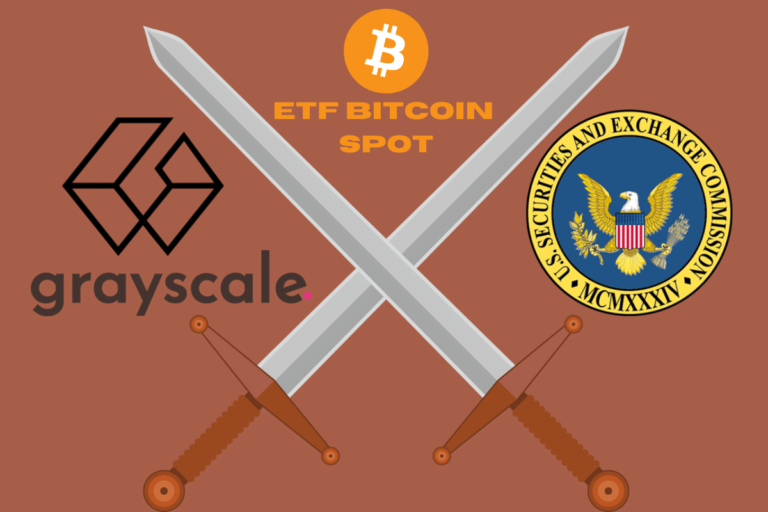
Bitcoin wriggles ahead of the FED. War, inflation, recession, how long before Jérôme Powell pulls out his money printing press?
We take stock
The US central bank is expected to raise its key rate by 0.50 or 0.75% this Wednesday evening at 8 p.m. The rate will then drop to 3.25%. More crucially, sound reduction balance sheet is expected to accelerate at the rate of 95 billion per month. The latter weighs 8830 billion, down 130 billion since April.
In May, the New York Fed predicted that the balance sheet would shrink to $5.9 trillion by 2025. That means private bank reserves would fall to around 8% of GDP.
For Jonathan M. Wright of Johns Hopkins University (the seraglio…), interrogates on September 14 by the brookings institution, “Such a drop would probably be too great”. “When private bank reserves last approached this level (Sept 2019), market turbulence threatened the Fed’s ability to control short-term interest rates.”
And losing control of short-term borrowing rates means system collapse. Bulk…
Wright therefore expects the Fed’s balance sheet to decline to only about $7.5 trillion by the end of 2023, before starting to grow again. “My hypothesis is that QE money [Quantitative Easing] will never be sucked back into the FED”Mr. Wright said.
“One of my favorite graphics.
They shouted into the void “we are reducing our balance sheet”, only to explode it upwards (in 2019).
The Fed cannot significantly reduce its balance sheet for very long without breaking something and becoming the buyer of last resort. »
Your servant shares this opinion. It’s only a matter of time before the FED pulls out its printing press.
Exchanges will remain under pressure until then, however, which could potentially weigh on bitcoin. Indeed, the correlation between Bitcoin and the S&P500 has been steadily increasing since the end of last year.
Knowing that Ray Dalio, who manages one of the largest investment funds in the world, estimates that a key rate of 4.50% would cause a further fall of 20% in the S&P500 (or -40% in all).
And given the inflation rate that remains above 8%, there is a good chance that the big helmsman of the FED will continue to raise the cost of money.
Especially since its European counterpart has already hinted that it will raise the ECB rate to 5%. The President of the ECB has even promised to raise rates until inflation is under control. But we are close to 10% and nothing indicates that things will settle down.
On the contrary, the German producer price index, which is a leading indicator of inflation, rose by 46% in August! The proxy war between NATO and Russia in Ukraine does not plead for lower energy prices either.
It is even rumored that Vladimir Putin will declare war on Ukraine tonight. In other words, Moscow will take the gloves off. It is no longer a “special operation”, but a war.
And the kiss had come
The worst is yet to come this winter. German Foreign Minister Annalena Burbock said on Monday: “We are war”.
Economy Minister Robert Habeck told him that “gas stocks will not suffice if the winter is harsh”. “Small businesses will not be able to survive the increase in energy prices “.
And to make matters worse, the dollar continues to appreciate as rarely before. For this reason, inflation will get even worse since the dollar remains the main currency used in international trade.
The Dollar Index soared 14% in 2022, the largest annual rise since the index was launched in 1985. This appreciation is fueled by the Fed’s aggressive interest rate hikes which are encouraging global investors to withdraw money from other markets and place it in the United States.
Additionally, the gloomy economic outlook in Europe as well as China is also boosting the greenback. The old continent must wean itself off Russian energy while the Middle Empire sees its real estate bubble burst.
For the United States, a stronger dollar means cheaper imports. This helps alleviate inflationary pressures. Conversely, the rest of the world is bearing the brunt of the effects of the rise in the dollar.
All this to say that in this hyperinflationary environment, it doesn’t really make sense to sell bitcoin as a risky asset. But it is so. We will see if this perception changes this winter, when energy inflation reaches three digits.
Not to mention the recession and the public deficits which will inevitably explode. Which suggests that central banks are bluffing and will soon have to print.
In 2019, the Fed was back to printing just nine months after starting to reduce its balance sheet which ended in a 34% crash on Wall Street. We are at 6 months…
The ECB will not delay either. Italy’s 10-year bond rate hits 4%, the highest since the 2014 European debt crisis. The ECB is likely to buy debt again shortly after the September election. For Christmas.
In the meantime, you have to turn your back and enjoy these inexpensive BTCs. No on-chain analysis this week. Glassnode preferred to focus on Ethereum, which has just disarmed Bitcoin in the hashrate race…
Receive a digest of news in the world of cryptocurrencies by subscribing to our new service of daily and weekly so you don’t miss any of the essential Tremplin.io!






